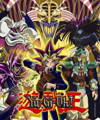YuGiOh Anime: Unleashing the Dueling Spirit
YuGiOh Anime, a captivating and thrilling Japanese animation series, has captured the hearts of fans worldwide with its unique blend of strategy, fantasy, and adventure. This article delves into the profound impact of the YuGiOh Anime on the trading card game (TCG) and explores the intertwining relationship between the anime and the TCG.
The Birth of a Phenomenon
When YuGiOh first premiered in Japan in 1998, it sparked a revolution in the world of TCGs. Created by Kazuki Takahashi, the anime introduced viewers to a world where the ancient Egyptian game of "Duel Monsters" resurfaced in modern times. The story follows the young protagonist, Yugi Muto, as he discovers the mystical Millennium Puzzle and unlocks the spirit of an ancient pharaoh within him.
The anime's gripping narrative and intricate dueling system immediately resonated with audiences. As the popularity of the YuGiOh Anime soared, the demand for the TCG surged in tandem. The TCG, developed by Konami, mirrored the gameplay mechanics and card designs featured in the anime, enabling fans to recreate the intense duels they witnessed on screen.
The Symbiotic Relationship
The ties between the YuGiOh Anime and the TCG run deep, with each medium fueling the success of the other. As the anime introduced new characters, storylines, and card mechanics, the TCG eagerly followed suit by incorporating these elements into their set releases. This interconnectedness not only kept the anime fans engaged but also enticed TCG players to delve deeper into the anime to discover new strategies and card synergies.
For instance, the introduction of the "Exodia the Forbidden One" archetype in the early seasons of the YuGiOh Anime had a profound impact on the TCG landscape. As fans witnessed Yugi assemble all five pieces of Exodia to achieve an automatic victory, demand for these cards skyrocketed. This led to Konami releasing special promotional sets, catering to the fanbase's enthusiasm and desire to recreate Yugi's iconic moments.
The Impact on TCG Strategy
The YuGiOh Anime's influence on the TCG extends beyond card availability. The anime's emphasis on strategic thinking, resource management, and outwitting opponents translated into the TCG gameplay. Players avidly observed the strategies employed by Yugi, his rivals, and other characters, and sought to emulate them in their own duels.
One prime example of the anime's impact on TCG strategy is the concept of combo plays. As viewers witnessed Yugi skillfully combining multiple cards to achieve powerful effects and turn the tide of the duel, TCG players recognized the value of synergy and began incorporating intricate combos into their own decks. This led to the emergence of combo-centric archetypes and a more dynamic and unpredictable metagame.
The Release of TCG Sets and the Anime
It's noteworthy to examine the set releases in North America at the time when the first seasons of the YuGiOh Anime debuted. Konami, recognizing the immense popularity of the anime, strategically timed the release of new TCG sets to coincide with pivotal moments in the show.
For example, when the "Battle City" arc captivated viewers with intense duels and the introduction of iconic cards like "Blue-Eyes White Dragon" and "Dark Magician," Konami responded by releasing the "Legend of Blue Eyes White Dragon" set in North America. This allowed TCG players to not only collect the cards they saw in the anime but also incorporate them into their decks to mirror the characters' strategies.
As the YuGiOh Anime progressed, Konami continued to release new TCG sets corresponding to key story arcs, ensuring that players could experience the evolving world of Duel Monsters alongside the anime's narrative. This synchronicity between the anime and the TCG not only fostered a sense of camaraderie among fans but also encouraged players to stay engaged and invested in both mediums.




